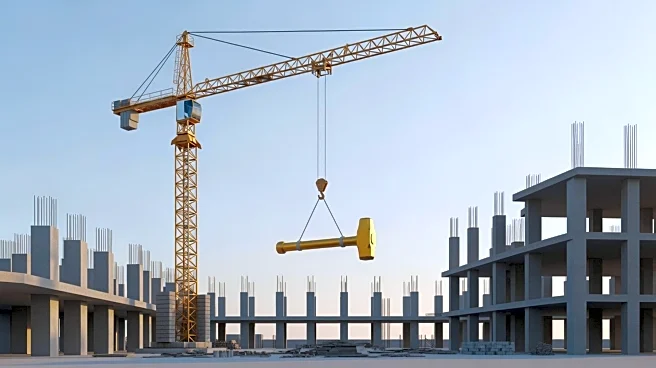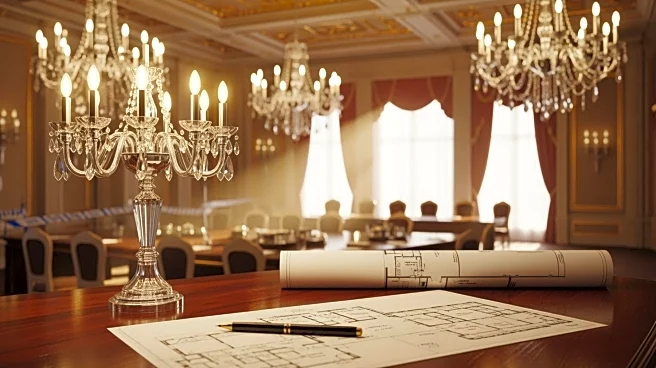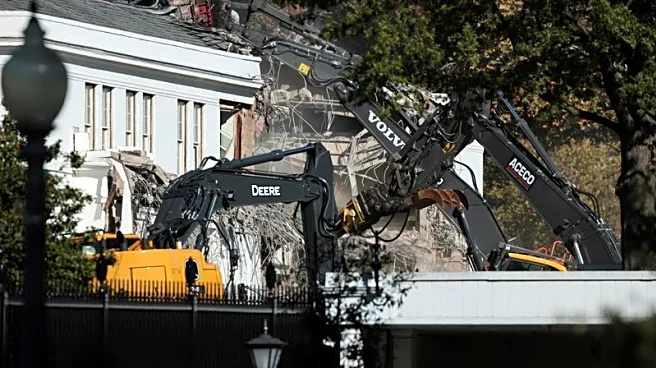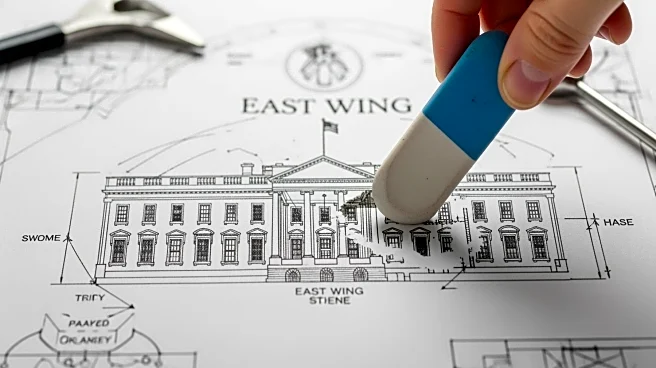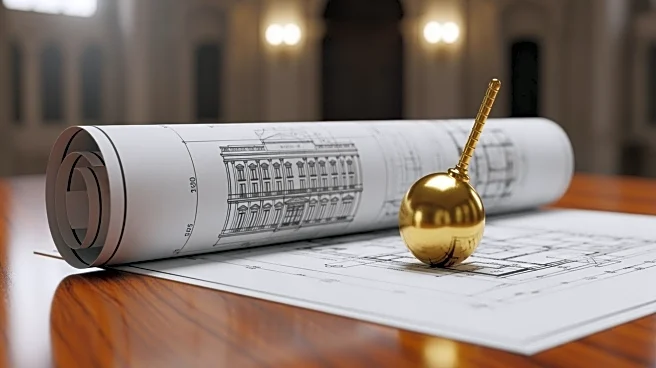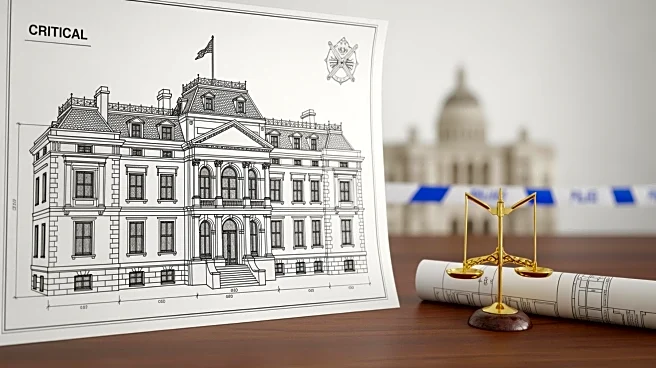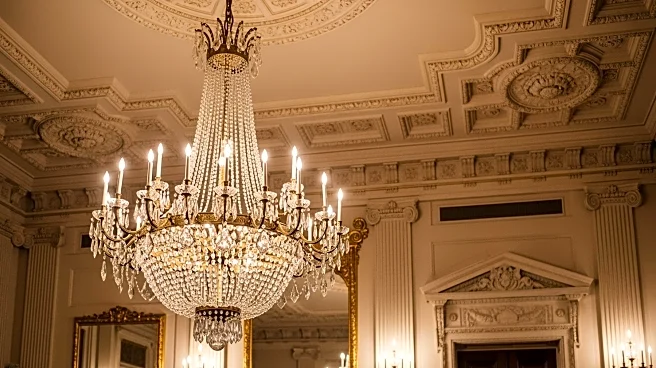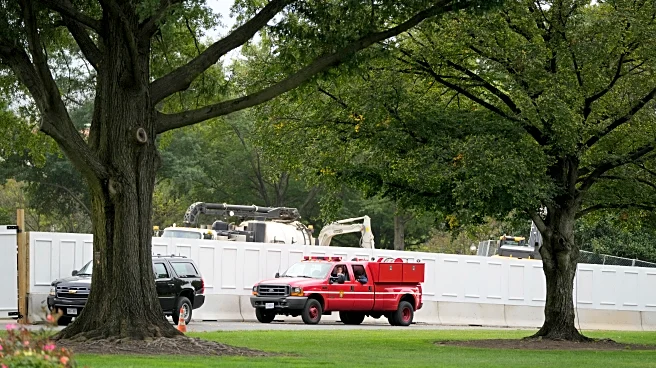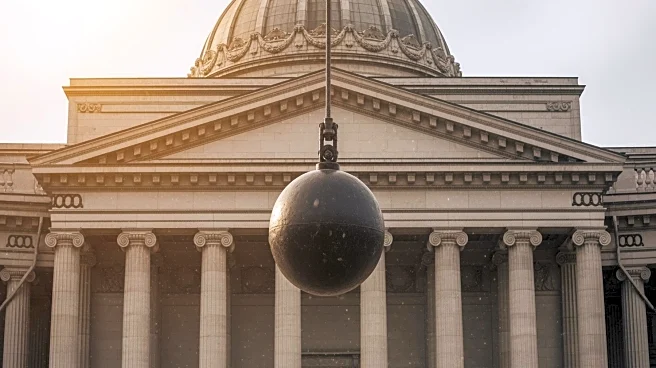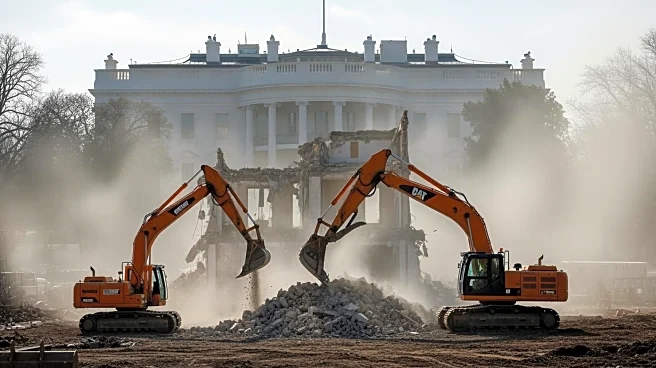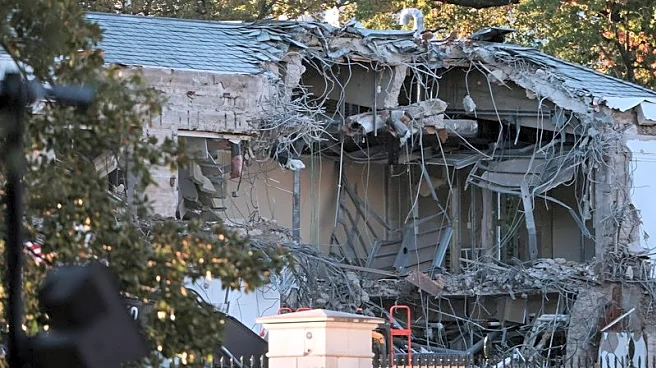What's Happening?
Late-night television hosts, including Stephen Colbert, Seth Meyers, and Jimmy Fallon, have expressed their views on President Donald Trump's new White House construction project. The project involves
the construction of a 90,000-square-foot ballroom in the East Wing, which has sparked debate due to its timing and cost. The ballroom, which can accommodate up to 999 guests, is funded privately by a mix of donors, corporations, and President Trump himself. The National Capital Planning Commission did not approve the project, citing jurisdictional limitations. The construction began in September with the aim of completing it before the end of Trump's term. The White House has assured that no taxpayer money is being used, although detailed donor disclosures are still pending.
Why It's Important?
The construction project has become a focal point for criticism, particularly in light of ongoing national issues such as the government shutdown. Critics argue that the project is a misallocation of resources and attention, especially when many federal employees are not being paid. The ballroom's construction is seen as a symbol of President Trump's priorities, drawing attention away from pressing national concerns. The project also raises questions about the transparency of funding and the role of private donations in public projects. The late-night hosts' commentary reflects broader public skepticism and highlights the cultural and political implications of such a high-profile renovation.
What's Next?
Construction on the ballroom is expected to continue throughout President Trump's term, with a target completion date of January 2029. The project may face further scrutiny and criticism, particularly if additional details about its funding and impact on the White House emerge. Political leaders and civil society groups may continue to debate the appropriateness and timing of the project, potentially influencing public opinion and future policy decisions regarding federal property renovations.
Beyond the Headlines
The ballroom project underscores the ongoing tension between private interests and public responsibilities in government actions. It raises ethical questions about the influence of private donations on public projects and the transparency required in such endeavors. The project also reflects a broader trend of executive branch modernization, which has historical precedence but remains controversial in its execution and funding.
